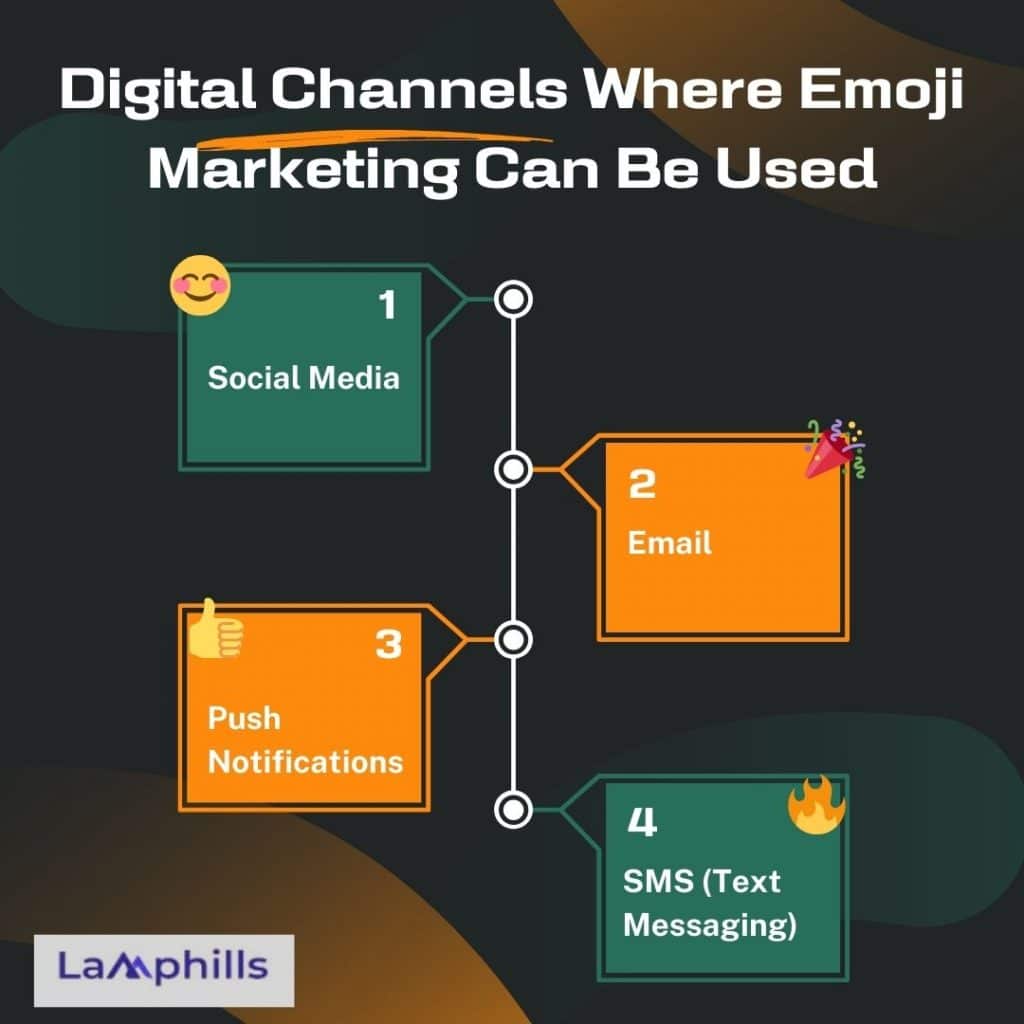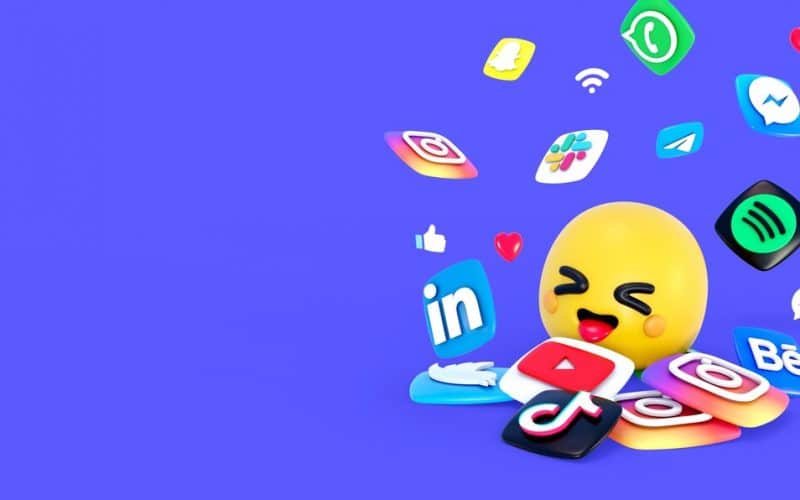Have you ever considered using emojis to boost your marketing campaigns? Emojis have transformed from simple characters into effective marketing tools that can add an interesting and engaging touch to your brand. In this blog post, I’ll look at the art of emoji marketing, the benefits it can provide for your brand, and some very exciting case studies of successful emoji marketing campaigns. Ready to discover the emojis marketing space? Let’s go!
Key Takeaways
- Emoji marketing is the strategic use of emojis across various marketing channels to connect with your audience on a deeper level, improve brand personality, and make your content more visually appealing.
- Emojis can significantly boost engagement and emotional connection in marketing campaigns. For instance, adding emojis to social media posts and email subject lines can make the messages more personable and relatable, leading to higher interaction rates.
- Brands like Domino’s Pizza, Taco Bell, and Chevrolet have effectively used emojis in their marketing campaigns to generate buzz and engage with their audiences. These examples illustrate how the creative and strategic use of emojis can streamline processes and spark conversations.
- To use emojis effectively, marketers should know their audience, avoid overuse, consider the context, test and analyze their strategies, and be culturally sensitive. Tailoring emoji usage to specific demographics and maintaining a balance between text and emojis are key to creating impactful marketing messages.
- While emojis can enhance marketing efforts, they also come with risks such as misinterpretation and overuse. Understanding the meanings of emojis and using them sparingly can prevent messages from appearing unprofessional or confusing, thus maintaining the brand’s credibility and effectiveness.
What is Emoji Marketing
Emoji marketing is the strategic use of emojis across various marketing channels to connect with your audience on a deeper level, improve brand personality, and make your content more visually appealing. Think of it as sprinkling tiny emotional sprinkles on your marketing messages to make them stand out and resonate with your audience. ✨
I remember working on a social media campaign for a tech startup one certain time like that. Our posts were informative but lacked a certain warmth. After integrating emojis, our engagement rates soared. The simple addition of a smiley face or a thumbs-up emoji made our messages feel more personable and relatable.
Emoji vs. Emoticons
Emoji was inspired by emoticons from the 1990s, yet the two words still refer to two distinct sets of characters. Emoticons are created by employing specific keyboard characters to make a face that adds emotion to the text. Emoticons appear like this:
Emojis are small, pixel-based images that show various faces, activities, and objects. Every year, new emojis are designed and introduced to your favorite smartphone’s keyboards.
Emojis give depth and realism to previous emoticons. Popular emojis include a kissy face, a slice of pizza, airplanes, and more. Emojis can be edited to include different skin tones, hair colors, and textures.
Why Use Emoji Marketing?
You might be wondering, why use emoji marketing at all? Well, according to a study by Adobe, 81% of emoji users believe that people who use emojis are friendlier and more approachable. Moreover, an analysis by Emogi found that 92% of online consumers use emojis, and including them in your marketing can increase engagement rates by up to 30%.
#1. It Improves Emotional Connection
Emojis are powerful because they can convey complex emotions quickly. Think about the last time you received a message with a heart emoji. It likely made you feel a sense of warmth and connection. Emojis can help brands create the same emotional resonance with their audience.
In one of my previous roles in the PR industry, we ran an email marketing campaign for a holiday promotion. We included emojis in the subject lines to evoke excitement and urgency (like 🎉 and ⏳). Our open rates increased by 20%. It was a clear demonstration of how emojis can enhance emotional connection and drive action.
#2. Simplifying Communication
Consumers skim content more than they read it in this digital age. Emojis can quickly convey a message or sentiment, making your communication more efficient. For example, a simple checkmark emoji ✅ can indicate task completion or approval without needing any words.
When I started using emojis in my professional emails, I noticed a marked improvement in the response rates. Adding a smiley face 😊 at the end of a sentence made my emails feel less formal and more friendly, which in turn encouraged more open and engaging responses.
#3. Humanize your Brand.
When your audience trusts your brand, they are more inclined to promote it to others and become loyal customers.
Emojis in communications can give your brand more personality and relatability. You can humanize your brand and relate with your target audience by using the emoji they use every day in text messaging, chat, and personal social media postings.
Goldman Sachs as an investment bank, is not known for its youthful style. But it didn’t stop them from displaying another aspect of their personality and appealing to a younger audience by sending out a tweet made nearly entirely of emojis, which convey a story on their own. When writing a Tweet like this, consider reading your tweet aloud using the emoji names—while emoji can be read by screen readers, an overly long chain of them or the use of repetitive ones can make your message harder to understand in that format.
Emoji Marketing Examples
Now that you understand why emoji marketing is effective, let’s look at some real-world examples of brands using emojis to connect with their audience.
#1. Domino’s Pizza 🍕 Emoji Ordering
One of the most innovative uses of emojis in marketing is by Dominos. They launched a service where customers can order pizza by simply tweeting the pizza emoji to the company’s Twitter account. This clever use of emoji marketing not only streamlined the ordering process but also generated a lot of buzz and engagement on social media.
#2. Taco Bell’s Taco Emoji Launch
Taco Bell’s taco emoji launch campaign is another prime example of effective emoji marketing. The Unicode Consortium approved the new taco emoji that the fast-food business offered.
To promote the taco emoji, Taco Bell ran a promotion in which fans could text a taco emoji to a certain number and receive a free taco. This campaign was not only entertaining and engaging, but it also helped generate buzz and enthusiasm for the new emoji, showing the potential of emojis in marketing.
#3. Chevrolet Emoji Press Release
Chevrolet once issued a press release written entirely in emojis to announce the 2016 Chevrolet Cruze. This bold move grabbed attention and sparked conversations, showcasing how emojis can be used creatively to generate media coverage and consumer interest.
Digital Channels Where Emoji Marketing Can Be Used

#1. Social Media
Social media is one of the best platforms for brands to build personal relationships with their customers. It’s no surprise that this is where most emojis are used. Here is an example of a brand that has its social media emoji game on point:

#2. Email
How can you differentiate your email communication in a world where every other brand attempts to increase engagement through email marketing?
The solution: Include one or two emojis in your email subject lines and preview text.
Email subject lines and content without emojis can look bland. However, including emojis in your email marketing strategy adds character to your messaging.
#3. Push Notifications
We’re seeing a growing number of brands experiment with rich media in push notifications. However, studies suggest that simply using emojis increases push notification open rates by 85%.
It’s no surprise that Duolingo uses emojis in both its WhatsApp marketing and its push notifications. It provides daily streak reminders, leaderboard updates, and notifications about friends’ achievements to the Duolingo app. Adding emojis to these messages captures the reader’s attention, and the messaging encourages healthy competition, driving users to return to the app.
#4. SMS (Text Messaging)
Text messages as a marketing channel are gaining traction in Europe and North America.
However, it is one of the least common spots for emoji use.
Why? Emojis in SMS require the entire text message to be sent using the Unicode standard, which limits character count and prevents marketers from delivering longer messages.
Nonetheless, firms such as Doe Lashes, a California-based beauty brand, and Bones Coffee Company, a Florida-based coffee company, heavily use emojis in their SMS marketing campaigns. This works effectively for them because their SMS messages are tailored to the recipient and include eye-catching emojis.
Best Emoji for Marketing
Emojis are a powerful tool in the world of marketing. They can convey emotions, grab attention, and make your messages more relatable. Here are the best 10 emojis for marketing, along with tips on how to use them effectively.
#1. 😊 Smiling Face
The smiling face emoji conveys friendliness and approachability. It’s perfect for customer service interactions and friendly brand messages.
How to Use It:
- In welcome messages
- To show appreciation
- In casual, friendly communications
#2. ❤️ Red Heart
The red heart emoji evokes love and passion. It’s great for highlighting customer testimonials or expressing gratitude.
How to Use It:
- In customer testimonials
- To express gratitude
- For promoting products related to love or care
#3. 🎉 Party Popper
The party popper emoji signifies celebration and excitement. Use it for announcements, promotions, and milestones.
How to Use It:
- Announcing sales and promotions
- Celebrating milestones
- Highlighting special events
#4. 🚀 Rocket
The rocket emoji symbolizes growth and innovation. It’s ideal for showcasing new products or services and expressing progress.
How to Use It:
- Introducing new products
- Showcasing growth
- Promoting tech and innovation
#5. 🔥 Fire
The fire emoji indicates something hot or trending. It’s perfect for drawing attention to popular products or hot deals.
How to Use It:
- Highlighting trending products
- Announcing limited-time offers
- Emphasizing popular content
#6. 👍 Thumbs Up
The thumbs-up emoji shows approval and agreement. Use it to affirm positive actions and responses from your audience.
How to Use It:
- Confirming orders or actions
- Showing approval of customer feedback
- Encouraging positive engagement
#7. 💡 Light Bulb
The light bulb emoji represents ideas and creativity. It’s great for sharing tips, innovative ideas, and solutions.
How to Use It:
- Sharing new ideas or tips
- Highlighting creative solutions
- Promoting innovation and inspiration
#8. 📈 Chart Increasing
The chart increasing emoji signifies growth and success. It’s ideal for presenting statistics, achievements, and business growth.
How to Use It:
- Showcasing business growth
- Presenting positive statistics
- Celebrating achievements
#9. ✨ Sparkles
The sparkles emoji highlights something special or new. Use it to draw attention to special features, new products, or exciting updates.
How to Use It:
- Announcing new features or products
- Highlighting special offers
- Enhancing the excitement in messages
#10. ⏰ Alarm Clock
The alarm clock emoji creates urgency for time-sensitive offers and reminders. It’s perfect for promoting limited-time deals and deadlines.
How to Use It:
- Promoting limited-time offers
- Setting reminders for events or deadlines
- Creating urgency in calls-to-action
Avoiding Common Emoji Marketing Pitfalls
While emojis can be an effective marketing tool, it’s important to be aware of various risks that can arise when using them. Misinterpreting emoji meanings and overusing emojis are two key issues that can limit the effectiveness of your marketing campaigns.
#1. Misinterpreting Emoji Meanings
Misinterpreting emoji meanings can confuse and potentially harm your brand’s reputation. To avoid this problem, grasp the meaning of each emoji you use and make sure it’s appropriate for your audience and context.
Common mistakes when interpreting emoji meanings include assuming an emoji has a universal meaning, misinterpreting the attitude or emotion expressed, and using an emoji incorrectly for a specific context or audience. By researching and understanding the significance of each emoji, you can avoid these mistakes and effectively incorporate emojis in your marketing approach.
#2. Overusing Emojis
Overuse of emojis in marketing messages can make them appear amateurish and difficult to interpret, potentially leading to emails ending up in the spam bin. Using too many emojis can also cause tiredness and alienation among your target audience, leaving them uninterested in your message.
To avoid these issues, use emojis sparingly and only when they offer value to your communication. Striking the right balance between text and emojis is key to creating engaging, effective marketing content that resonates with your audience.
Tips for Using Emojis Effectively in Marketing
While emojis can be a powerful tool, it’s important to use them correctly. Here are some tips to help you leverage emojis effectively in your marketing:
#1. Know your Audience
Different demographics respond differently to emojis. Younger audiences might be more receptive to casual and playful emojis, while a more professional audience might appreciate a more restrained use. Tailoring your emoji usage to your audience can make your messages more effective.
When working with a financial services client, we opted for minimal emoji use to maintain professionalism. We primarily used checkmark ✅ and chart increasing 📈 emojis to highlight key achievements and data points. This subtle use of emojis helped maintain the brand’s credibility while still adding a touch of visual appeal.
#2. Avoid Overuse
While emojis can improve your message, using too many can make your communication look unprofessional or cluttered. Aim for balance—use emojis to complement your text, not replace it.
In a social media campaign for a healthcare brand, we initially overused emojis, thinking it would make the content more engaging. However, feedback indicated it was overwhelming and unprofessional. We scaled back to using emojis only to highlight key points, which improved readability and engagement.
#3. Context is Key
Make sure the emojis you use are appropriate for the context. What works for a casual social media post might not be suitable for a formal email or a press release.
During a holiday campaign for a retail brand, we used festive emojis like snowflakes ❄️ and Christmas trees 🎄 in our social media posts to evoke the holiday spirit. However, for our formal newsletter, we only used a subtle snowflake emoji at the end to maintain professionalism while still adding a seasonal touch.
#4. Test and Analyze
Like any marketing strategy, it’s important to test and analyze the effectiveness of your emoji usage. A/B testing different versions of your messages—with and without emojis—can provide insights into what works best for your audience.
#5. Be Culturally Sensitive
Emojis can have different meanings in different cultures. Research and ensure that the emojis you use are appropriate and won’t be misinterpreted by international audiences.
While managing a global campaign, I once used the thumbs-up emoji 👍 extensively. Later, I learned that in some cultures, it can be perceived as offensive. This experience taught me to always research and consider cultural nuances before using emojis in international communications.
Download Lamphill’s Checklist Here
How are emojis used in marketing?
Emojis are an excellent way to engage your audience and make your content visually appealing. They can bring your brand to life by conveying emotion and generating a sense of connection.
Using emojis can help your content stand out and become more memorable. They can also be used to add humor and lighten the mood.
Should you use emojis in ads?
Yes! Using emojis in ads can be highly beneficial for various reasons. They can increase engagement, convey emotions effectively, and make your content more relatable and memorable. However, like any marketing tool, they should be used thoughtfully and strategically.
Are emojis SEO-friendly?
Yes, emojis can be SEO-friendly when used correctly. While they might not directly influence search engine rankings, they can impact user behavior and engagement, which indirectly affects SEO.
When not to use emojis?
While emojis can enhance communication and engagement, there are situations where they might not be appropriate or effective. Here are some scenarios when you should avoid using emojis:
- Formal communication
- Ambiguity and misinterpretation
- Cultural sensitivity
- Technical limitations
- Professional tone
- Accessibility concerns
- Overuse
- Inconsistency with brand voice
Download Lamphill’s Checklist Here
Conclusion
Emojis are a powerful tool that can add personality, engagement, and visual interest to your marketing campaigns. Used strategically, they can help you connect with your audience on a deeper level, build brand awareness, and ultimately drive results. So, don’t be afraid to experiment with emojis in your marketing mix. Just remember to choose them wisely, use them sparingly, and track your results.
Now it’s your turn! What are your experiences with emoji marketing? Have you seen any brands using emojis cleverly or effectively? I would like you to share your thoughts in the comments below!
Related Articles
- 15 Creative PR Email Templates to Boost Your Outreachs Success ( Plus Tips on Writing One)
- Brand Pitch Email Templates: What Major Companies Use To Land 85% Of Their Clients
- HOW TO WRITE & SEND OUT PRESS RELEASE EMAILS WITH TEMPLATES
- The Essentials of Buzz Marketing: What It Is and How It Worked for Me (Best Strategies)
- My 7 Best Tips for Building Compelling Storytelling Marketing Strategies for Brands in 2024






